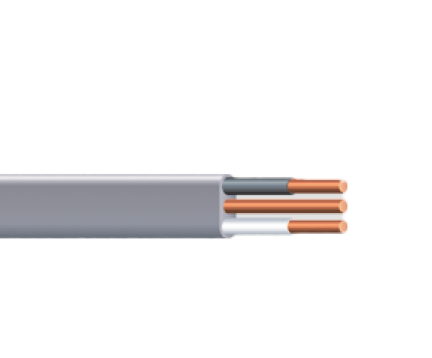The Impact of 5G on Cable Infrastructure: Preparing for the Next Generation of Connectivity
As the United States gears up for the rollout of 5G networks, the implications for cable infrastructure are worth considering. In this guide, we'll discuss the influence of 5G on cable infrastructure and the imperative to upgrade existing systems to meet the demands of this next generation of connectivity.The 5G Revolution Unleashed
Unprecedented Speed and Capacity:
5G, the fifth generation of wireless technology, promises unparalleled speed, capacity, and low latency. With the potential to deliver data rates several times faster than its predecessor, 5G is set to revolutionize the way we connect, communicate, and consume information.
Diverse Applications:
Beyond faster internet on our smartphones, 5G is poised to enable a multitude of applications, including the Internet of Things (IoT), autonomous vehicles, augmented reality, and smart cities. These advancements demand a robust and responsive cable infrastructure to support the increased data traffic and connectivity requirements.
Fiber Optics at the Forefront
The Fiber Optic Advantage:
As 5G networks require significantly higher data transfer rates, low latency, and increased reliability, fiber optic cables emerge as the backbone of this technological revolution. Fiber optics offer greater bandwidth and faster data transmission compared to traditional copper cables, making them an essential component of 5G infrastructure.
Densification of Fibre Networks:
The rollout of 5G necessitates a denser network of fiber optic cables. Small cells, which are essential for delivering the high-frequency signals used in 5G, require fiber connections to provide the necessary bandwidth. This densification of fiber networks ensures that the data can travel seamlessly from cell towers to end-users.
Upgrading Existing Cable Infrastructure
Transitioning to Fiber:
To meet the demands of 5G, existing cable infrastructure must undergo a significant transformation. Transitioning from traditional copper cables to fiber optics is a key step in preparing for the enhanced connectivity and data transfer capabilities that 5G offers.
Addressing Last-Mile Challenges:
The "last mile" refers to the final leg of the telecommunications network that connects the service provider's infrastructure to the end-user. Upgrading this critical segment to fiber optics is essential for delivering the high-speed, low-latency benefits of 5G directly to homes and businesses.
The Role of Coaxial Cables
Hybrid Fiber-Coaxial (HFC) Networks:
In some instances, hybrid fiber-coaxial (HFC) networks, which combine fiber optics and coaxial cables, are being utilized to bridge the transition to full fiber infrastructure. These networks maintain the benefits of fiber while leveraging existing coaxial cable infrastructure.
Upgrading Coaxial Cables:
For areas where full fiber deployment may take time, upgrading coaxial cables to support higher frequencies and data rates becomes crucial. This enables the existing cable infrastructure to handle the increased demands of 5G connectivity.
Meeting Bandwidth and Latency Requirements
The Need for Low Latency:
5G's promise of low latency is critical for applications like autonomous vehicles and augmented reality, where real-time responsiveness is non-negotiable. Upgraded cable infrastructure, especially with fiber optics, plays a pivotal role in meeting these stringent latency requirements.
Bandwidth Expansion:
The increased demand for bandwidth in a 5G-powered world necessitates not only the adoption of higher-capacity cables but also efficient management of network resources. Upgraded cable infrastructure is instrumental in meeting the escalating bandwidth needs of a hyper-connected society.
As the United States prepares for the widespread deployment of 5G technology, the impact on cable infrastructure is undeniable. The transition to fiber optics and the upgrading of existing cable systems are imperative to unlock the full potential of 5G connectivity. Whether through the densification of fiber networks, the upgrading of coaxial cables, or the adaptation of hybrid fiber-coaxial solutions, the cable infrastructure is undergoing a transformative evolution to support the demands of the next generation of connectivity.

